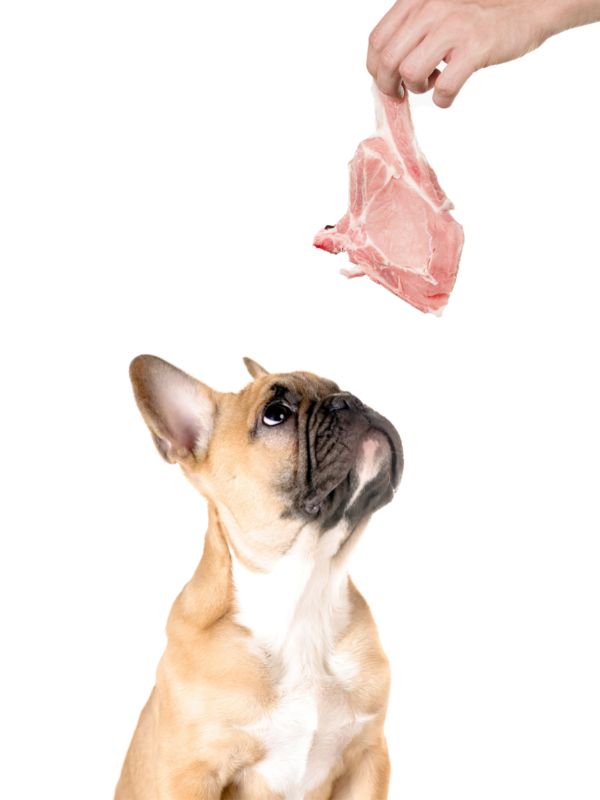Be mindful of meat quality and proper hygiene
Quality is an important factor when it comes to reducing the risks of raw dog food. The first step is to buy meats that look and smell fresh. Avoid giving your dog meat that has been lying out on the counter for too long.
Next, you need to make sure you exercise proper cleaning procedures. The Federal Drug Administration doesn’t recommend feeding dogs raw meat, but if you do, they suggest:
How meat plays an important role in their bodies
A great source of protein, meat is defined as “animal flesh that is eaten as food.” Common sources of meat include calf, cattle, chicken, deer, duck, pig, sheep, and turkey.
Based on their genetic makeup, dogs need to consume high-quality meat sources that contain amino acids their bodies cannot create. These 10 essential amino acids are arginine, histidine, isoleucine, leucine, lysine, methionine, phenylalanine, threonine, tryptophan, and valine—all of which are vital for tissue growth and repair. These amino acids help with the formation and maintenance of your dog’s skin, fur, nails, blood, and joints.
Depending on your dog’s life stage, the minimum protein requirement ranges from eight to 18% of dry matter (DM). However, the Association of American Feed Control Officials recommends that dog food should have at least 18% for growth and 22% for maintenance. Anything over 30% of DM would most likely be excreted by your canine and could even be harmful in some cases.

Possible benefits of feeding dogs raw meat
According to proponents, raw meat diets benefit dogs in the following ways:
Healthier coat and skin. Researchers at the University of California, Davis found that a raw meat diet is not only easier for dogs to digest, but also produces a softer, shinier coat than cereal-based dry food. This could be explained by the fact that raw dog food contains little to no carbohydrate filler, but plenty of fresh fat, readily available protein, plus high levels of vitamin E and zinc, all of which are vital to coat health. However, it’s important to note that most dog kibble adds vitamin E and zinc to the formula to achieve the same result.
Improved breath and oral health. A study by Brown and Park confirmed the theory that dental problems in dogs were a result of feeding “soft diets with insufficient dental activity”. In the experiment, canned dog food rations were replaced with beef oxtail (which consists of hard spinal vertebrae) in 30 dogs with tooth loss and dental calculus. More than 30% of the calculus was removed within 24 hours, and about 95% of the dogs’ calculus was removed by the end of the second week.
The important distinction here is that this study compared raw meat with bone fragments to canned food. Most raw diets do not contain hard bones and therefore do not help clean a dogs teeth as much as hard kibble does.
Possible improvement in medical conditions. Proponents claim raw meat can help to control conditions like diabetes, although further research is needed to confirm that this is actually beneficial for dogs with these health issues. Always discuss diet with your veterinarian if your dog has an underlying disease.
Improved digestion. Some believe a raw food diet enables dogs to absorb more nutrients. While kibble stays in dogs’ stomachs for seven to nine hours, raw food takes only one or two hours to digest. As a result, the dog will poop less frequently and their stools will smell less pungent.
Maintenance of lean mass and healthy weight. According to some, a raw diet balances dogs’ systems, helping them lose or gain weight as needed.
Is Raw Grocery Store Meat Safe For Your Pet?
Raw meat is likely to contain harmful bacteria like Salmonella, Listeria, E. coli and more. Cooking meat to a safe temperature kills off those harmful bacteria. By feeding uncooked meat, there’s a higher risk your dog will develop a foodborne illness or other type of bacterial infection.